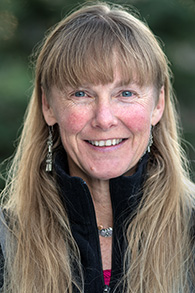Death Valley has a reputation for extremes. It is the lowest place, the driest place, and the hottest place in North America. Yet, it is but a “stone’s throw” from our highest mountain in the contiguous states, Mt. Whitney, and the snow-capped peaks of the southern Sierra Nevada mountains. This year, however, with the relentless atmospheric rivers dumping record amounts of snow and rain in the region, we enjoyed a cooler and wetter spring photo journey with the weather systems providing beautifully dramatic skies throughout the week.
When we headed west out of Las Vegas, we could see precipitation coming down ahead of us. Turns out it rained hard for most of the drive to Pahrump and beyond but as we approached the park boundary, it was as if it had not rained at all—thus reaffirming the reputation. After settling into our lodging for the next six nights and grabbing a quick bite for dinner, we headed right out to brush the dust off our cameras. A quick ten-minute drive and we were at one of the most photographed locations in the park, Zabriskie Point. The light was muted with an overcast sky but we were able to take advantage of blue hour lighting to start thinking about landscape photography.
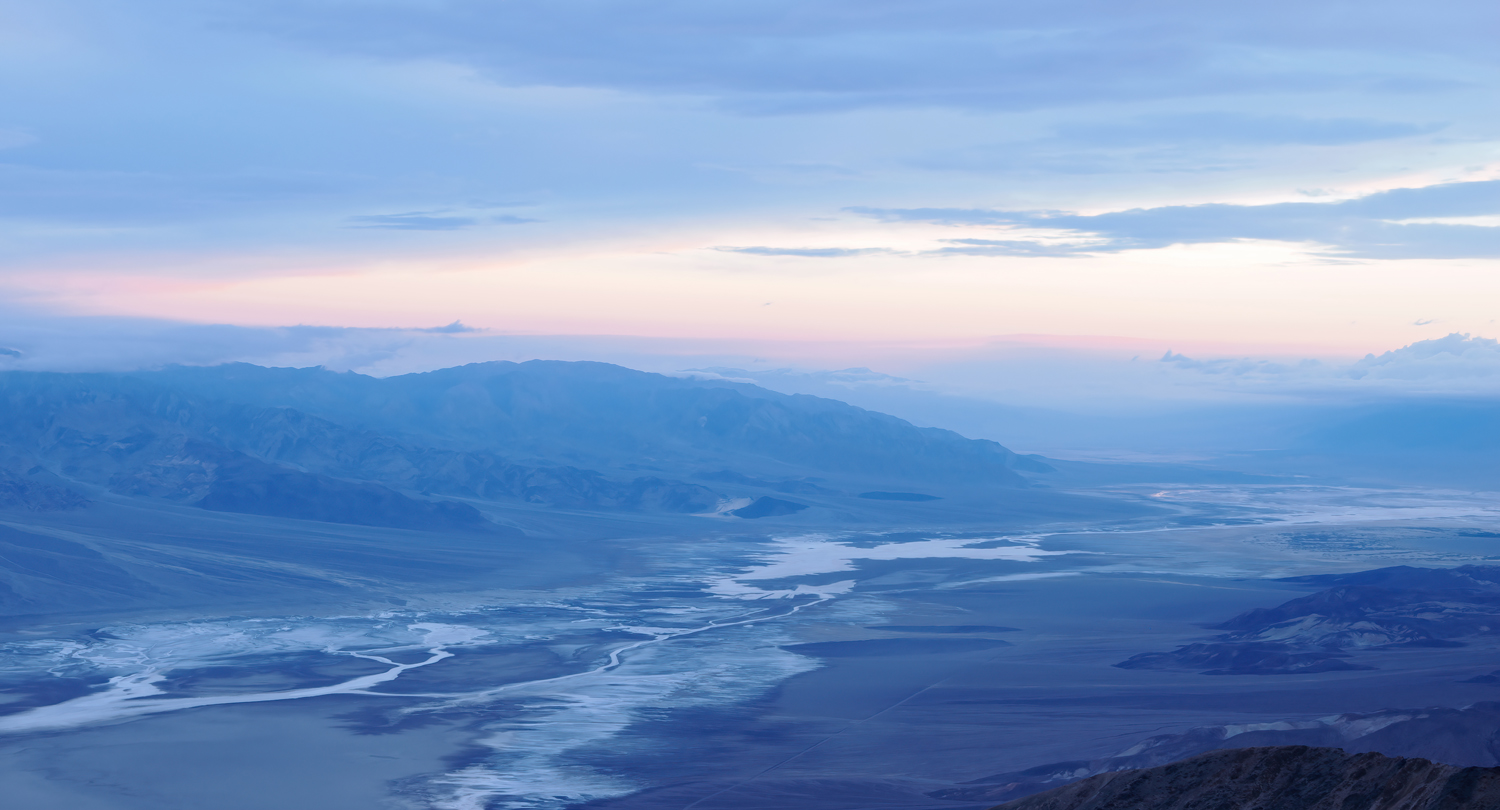
The next morning we were up early to be at Dante’s View before sunrise. The parking area sits a full 5,575 feet above the valley below and given the weather, elevation and time of day, the temperature was a brisk thirty-seven degrees when we pulled in. It was mostly cloudy but with some breaks to the east so we set up and waited to see what would unfold. It was beautiful blue light conditions with hints of pink to the north. Before heading out, we had a quick picnic breakfast then started back down the road. Not in a hurry to get back to the hotel, we made a stop along the way and found some of our first wildflowers. Overcast skies were perfect for capturing images of these beautiful Fremont’s Phacelia. They are low to the ground and scattered in small clusters so most folks would not notice them just driving by. Simply pulling over and wandering about in the desert this time of year usually reveals things often overlooked. We found a few more varieties along the road on our way back to the hotel so we did not arrive until it was already time for lunch.
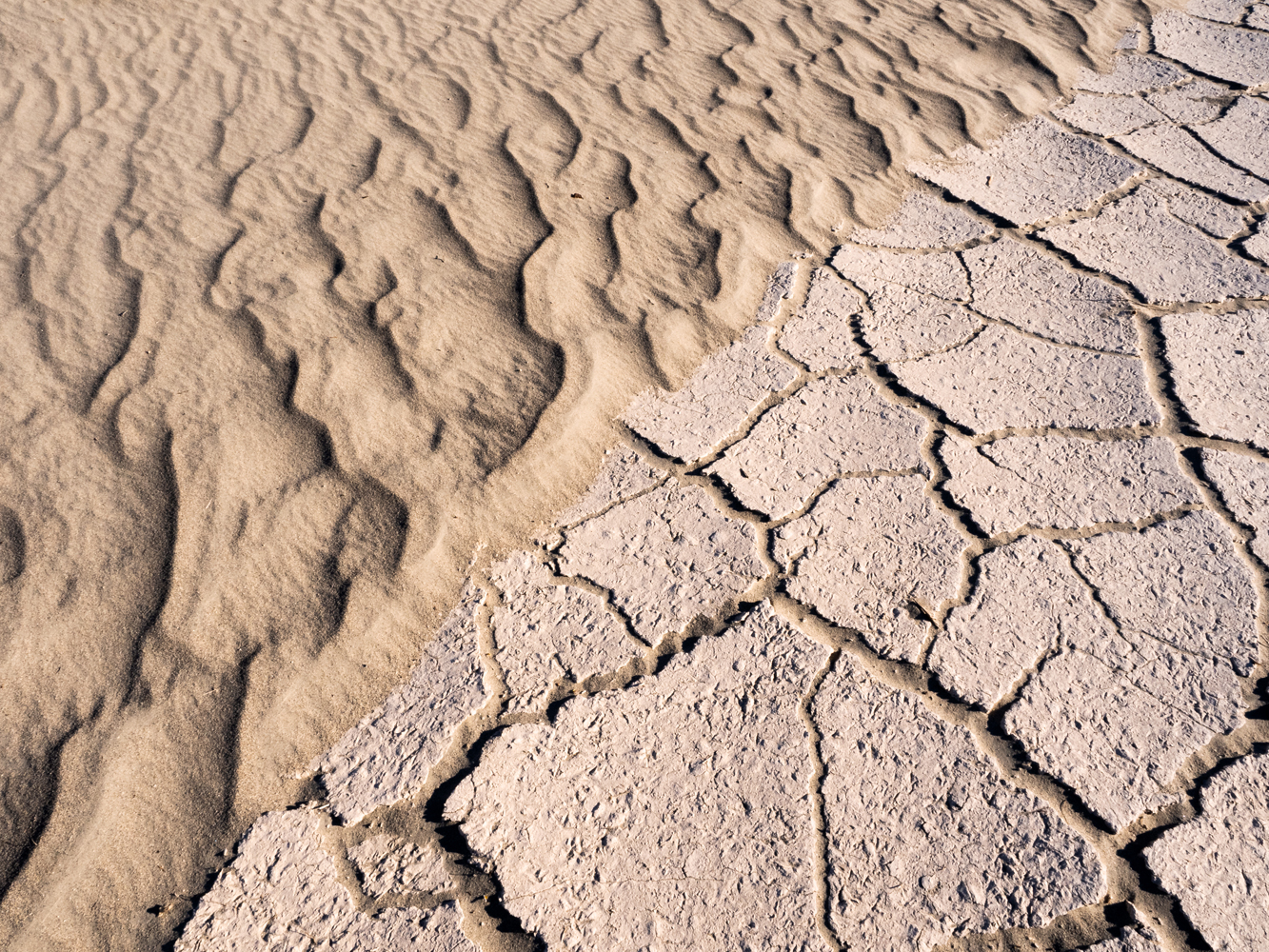
We took a break in the afternoon then made our way to Badwater Basin for evening light. As we had a bit of time before our walk out onto the salt pan, we drove further south and found even more flowers blooming. This time it was Desert Sunflower and a chicory called Gravel Ghost. On our return toward Badwater, we made another stop to explore textures in the drying mud along a wash that not long before had been flush with water. As the sun began its slow descent to the west, we parked the van, gathered our gear, and strolled out onto the salt flats. Our goal here was evening light on the captivating polygon features found in the basin. Clouds moved back in before the sun was down which added texture to the sky while we used salt patterns for our foreground. All in all, a very good day.
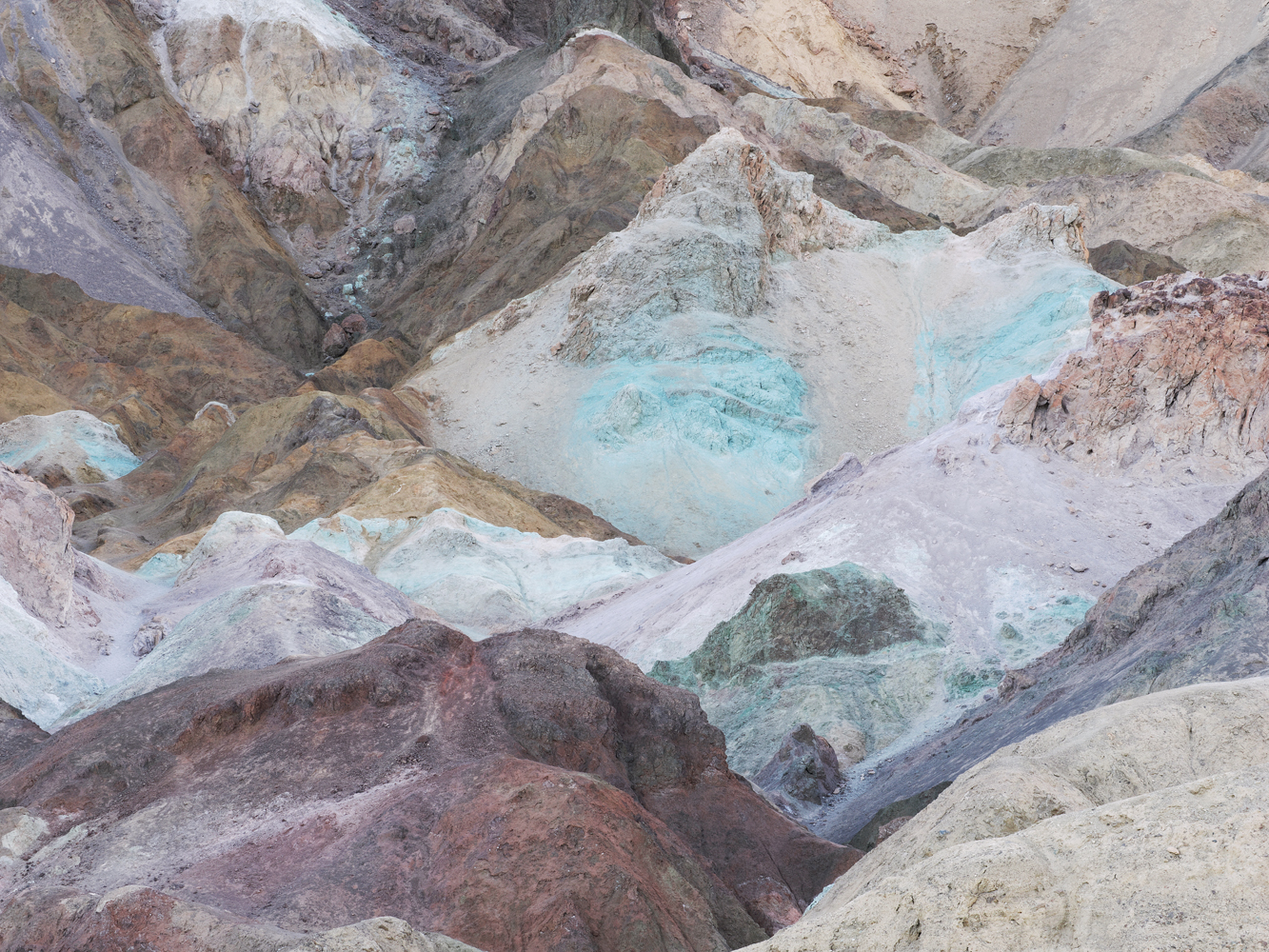
Tuesday’s forecast was for rain. Given that Artist’s Palette is best in overcast or early morning conditions, we jumped at the chance for a water enhanced saturation effect for our photos. We were not disappointed! Our morning was consumed with this place and the incredible pinks, greens, reds, and purples found in these formations. It let up enough for us to do a quick field breakfast then off we went to find other super saturated (literally) landscapes. With rain adding depth and layering to the scene, we chose to drive 20 Mule Team Canyon and explore a different palette of colors. It was a very productive (if a bit soggy) morning with fantastic opportunities for photography. By the afternoon, the rain had lifted a bit, so we headed to Mesquite Dunes to get the lay of the land and orient ourselves for arriving in the dark the next day. We had rain off and on, but it was good to get out in the dunes and start looking at compositions and patterns.
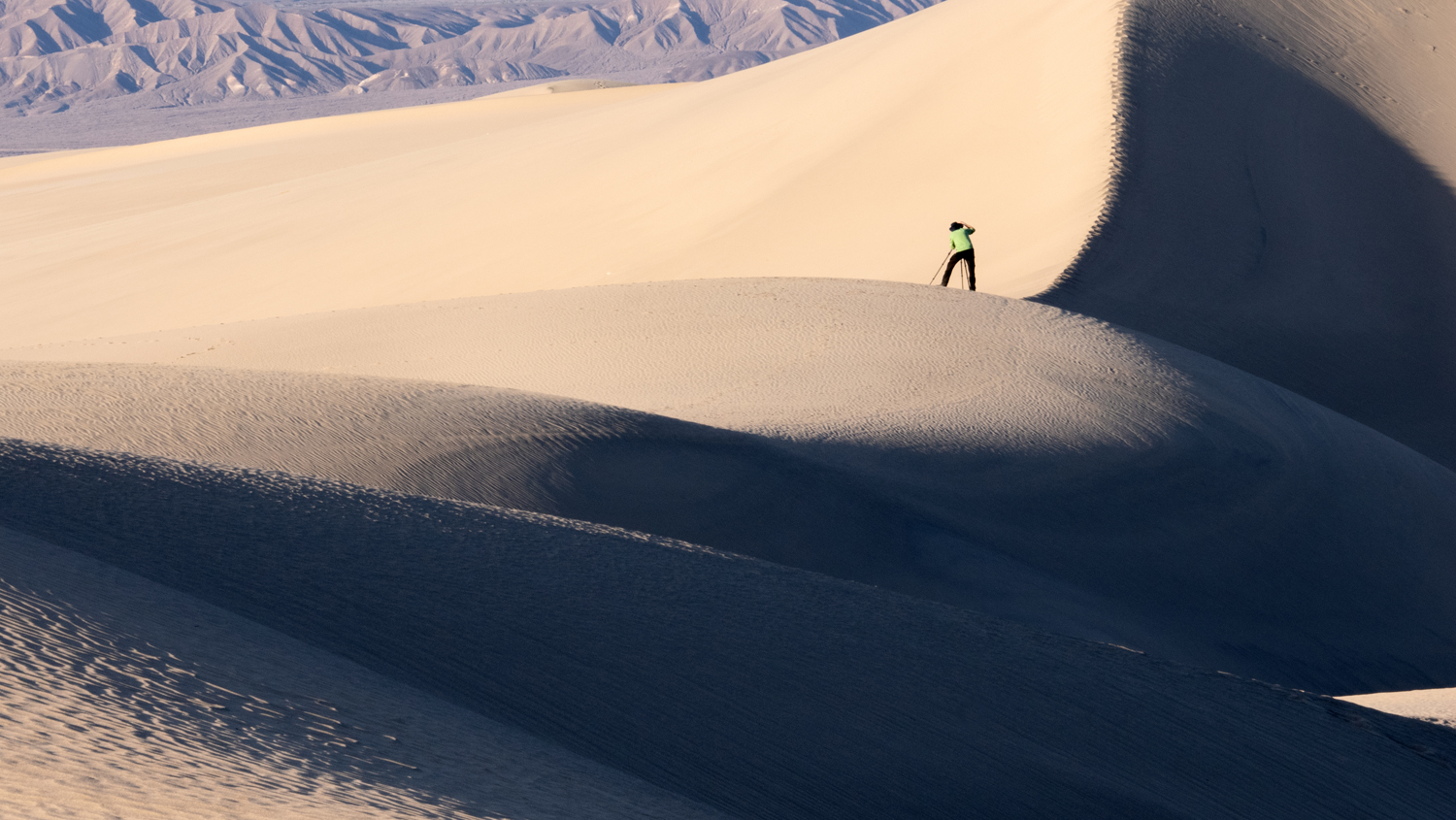
Another early morning had us out amongst the dunes before sunup. Being some of the very few people out there that early gave us a pick of locations for first light. Some wandered off to choose their own places while several of us stayed together to search out compositions to share. The light reflecting off the atmosphere and the few clouds that were around gave the dunes a wonderfully golden glow before the sun came above the horizon. We were like kids in a candy shop as the light began to play on the ripples in the sand and sculpting of the dunes. So much to see and capture here from distant landscapes to close up abstracts and everything in between. We chose scenes shooting into the sun for a more ethereal feel then turned our backs to the sun for the more classic dunescapes. We were not at a loss for subject matter. When the light became a bit too harsh for our tastes, we made our way over to Mosaic Canyon for a little over the top geology and practice with focus stacking or bracketing while capturing the beautiful rock formations found along the way.
Again, after a mid-day break to recharge batteries (literally and figuratively), we decided to explore a bit more on foot by wandering through Gold Canyon. This is a place where everyone’s eye is drawn to different things. Some went big, exploring further up the trail while others lingered, watching how the light bounced off one surface to light up the shadowed side of another.
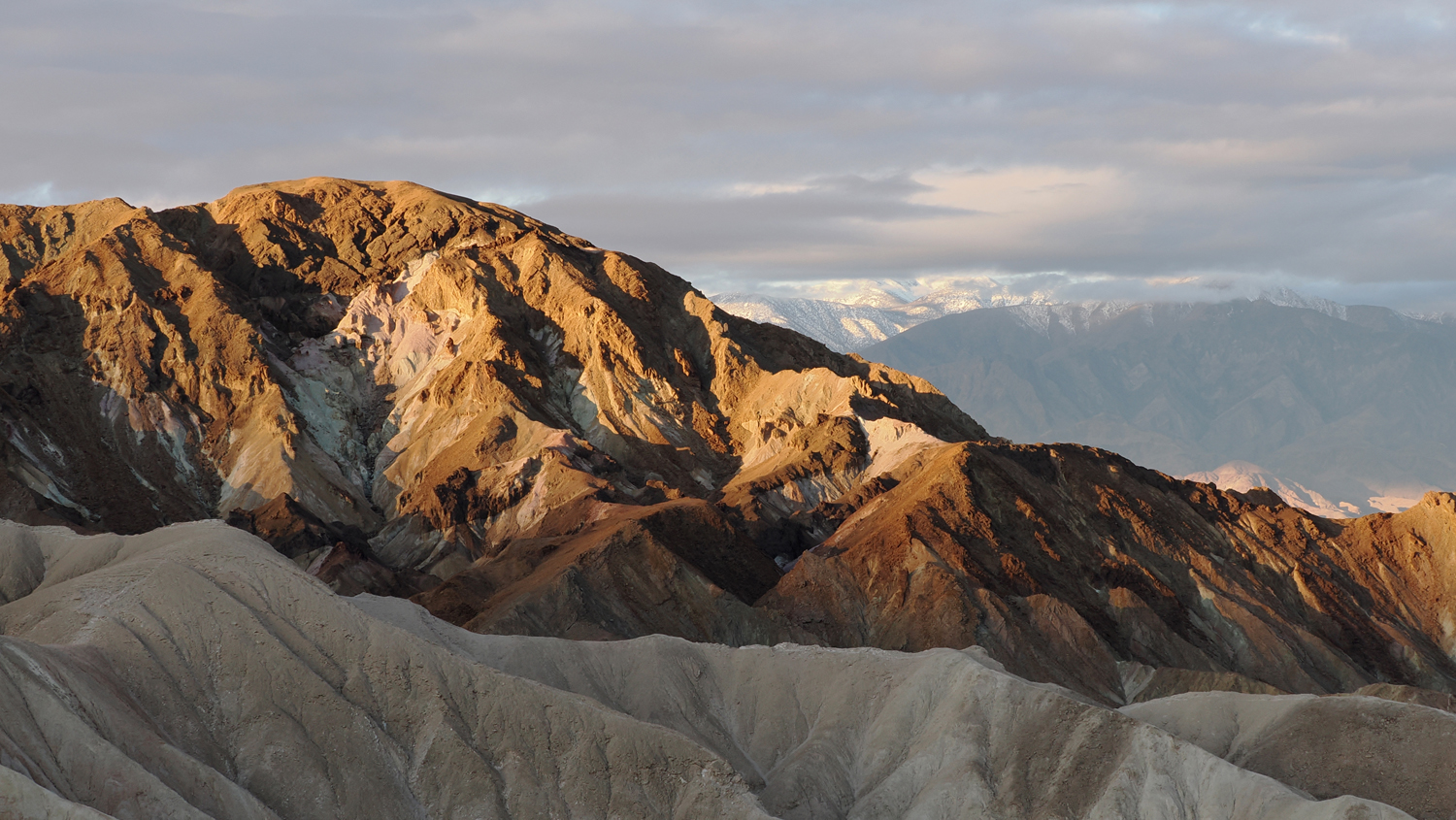
With only a few days left and the weather finally looking good for solid morning light, Wednesday found us at one of the most iconic spots in Death Valley for sunrise, Zabriskie Point. Our first evening here had been quite cloudy with good blue light but this morning we had some fabulous clouds to the west while a clear sky to the east. It was a classic morning shoot here but the sky and clouds truly made the scene come together in a way that a clear blue sky just does not. We had texture and alpenglow and pastel pinks in the clouds. It was simply perfect and as the sun climbed higher, the patterns in the landscape to the south came to life. What a morning! When the light was finally too high for good shadows, we wandered off to find more of those fabled desert wildflowers. There was one place we found that was truly green and where the diversity of plants was completely unexpected in “Death Valley.” We spent the remainder of the morning here photographing. While it was not the sought after super bloom, it was certainly blooming and there was a lot to capture.
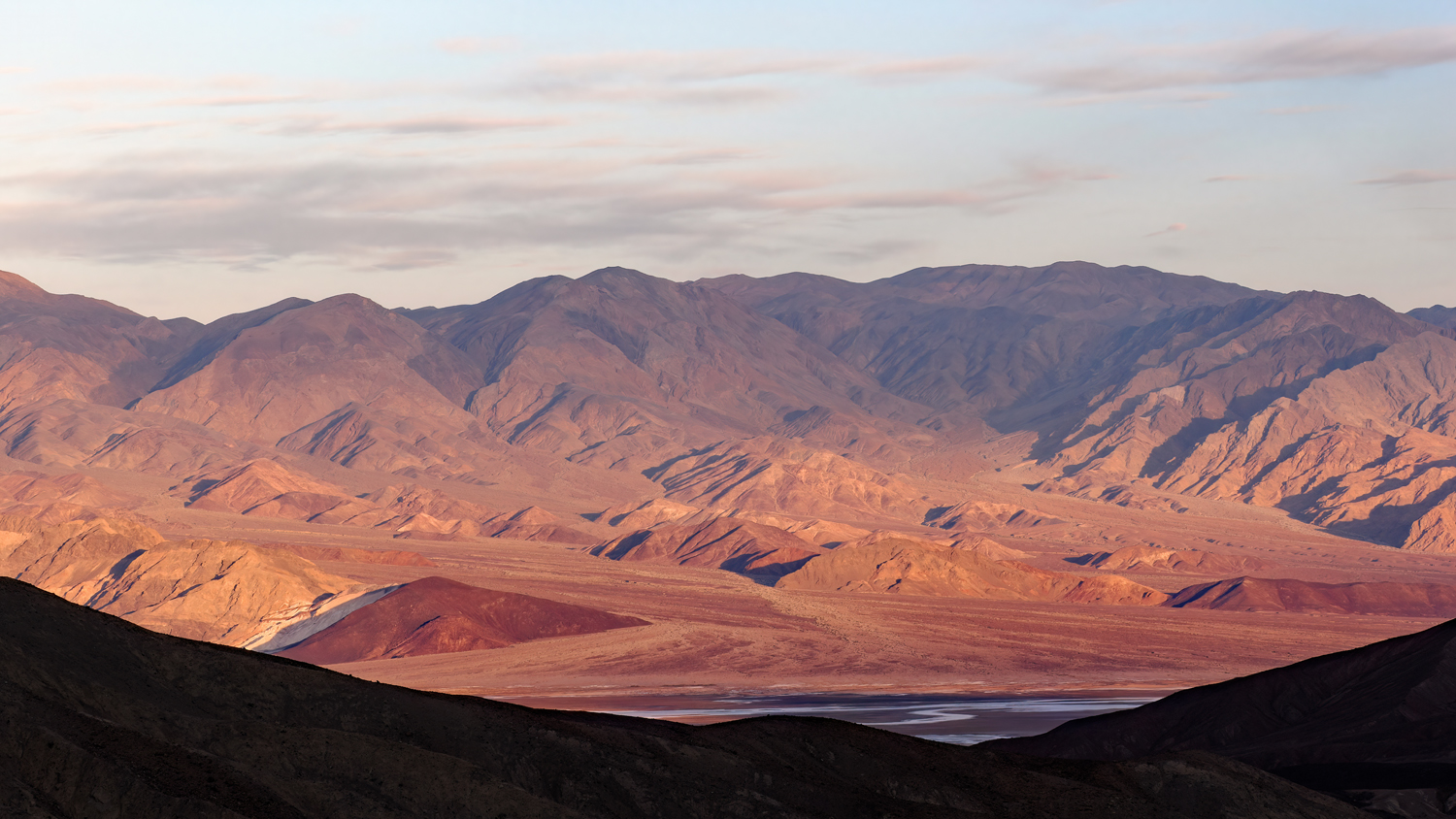
The skies cleared for most of the afternoon but as we were leaving again for the evening, we could see that another system was making its way back into the valley. Holding out for a cloudless sky at the dunes, we chose instead to have another look at Artist’s Drive in totally different light. We stopped a few places along the route, but the light was still just too harsh for us, and the wind had become strong enough to make shooting on a tripod virtually impossible. Even hand holding was not an easy task. However, as we came out of the gullies and onto the open slopes leading to the main road, the scene unfolding across the valley was stunning. An isolated rainstorm was drenching the lower slopes of the Panamint Mountains while sunlight was streaming through an opening in the clouds to the west creating a backlit storm scene that we could just not pass up – despite the wind!! We easily spent the next hour watching and shooting as the storm moved and changed. What started out as a nice but not dramatic evening turned out to be the most epic panorama photography of the whole week! You just won’t know if you don’t go.
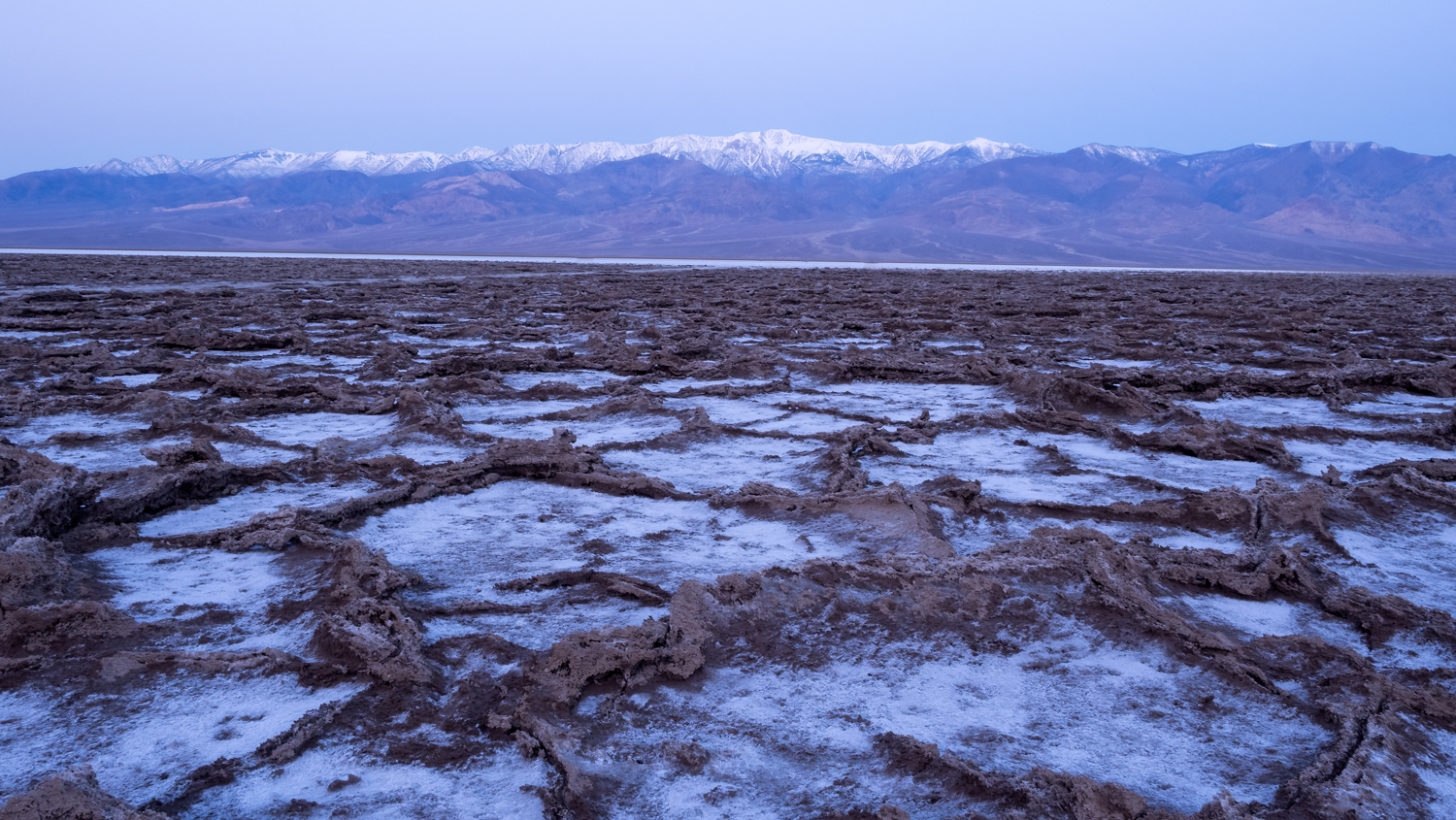
On our final full day of the trip, we had some choices to make. It was the first virtually cloudless day of the whole week so thought we would give Badwater Basin another go. We made our way back out onto the salt pan and worked on using filters as the sun began to light up the snow-covered slopes of Telescope Peak while the basin was still in shadow. Again, the polygon textures added a nice foreground element to the scene. Once done with those compositions, we chose to wait for the sun to peak over Dante’s View above us to capture a sunburst scene with the salt polygons for context. It was quite the wait and the moment passed in seconds, but it was worth it.
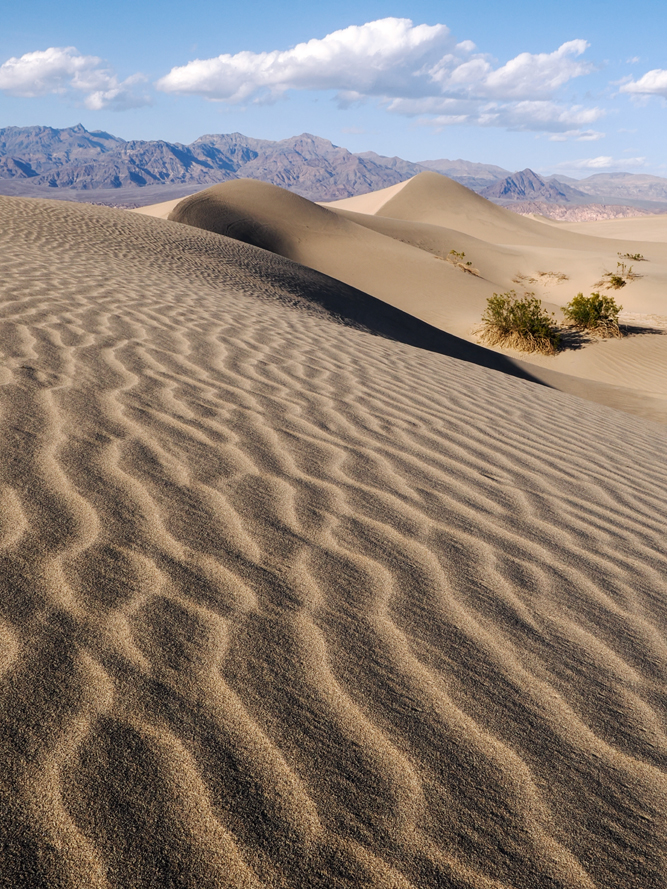
Today, we took a bit more time at the hotel so everyone could start organizing and packing for our departure tomorrow morning. This was so we could linger at the dunes for evening light and not feel rushed to come back and pack. Boy was that an excellent choice! We parked at an out of the way spot and walked into an area of dunes that sees very few to no visitors. Once we got out there, we found beautifully untracked dunes and plenty of pristine scenes. What a stunning final shoot. The light was perfect for throwing fabulous shadows and just before going down, that subtly golden glow lit up the dunes. It was an excellent last opportunity and one we had waited for all week!
Death Valley is a complex ecosystem and a place of extremes. Photographically, it would seem to be quite static but just the opposite is true. It is a dynamic landscape that offers up something different each time we arrive with a camera. I always leave excited about the next visit.

